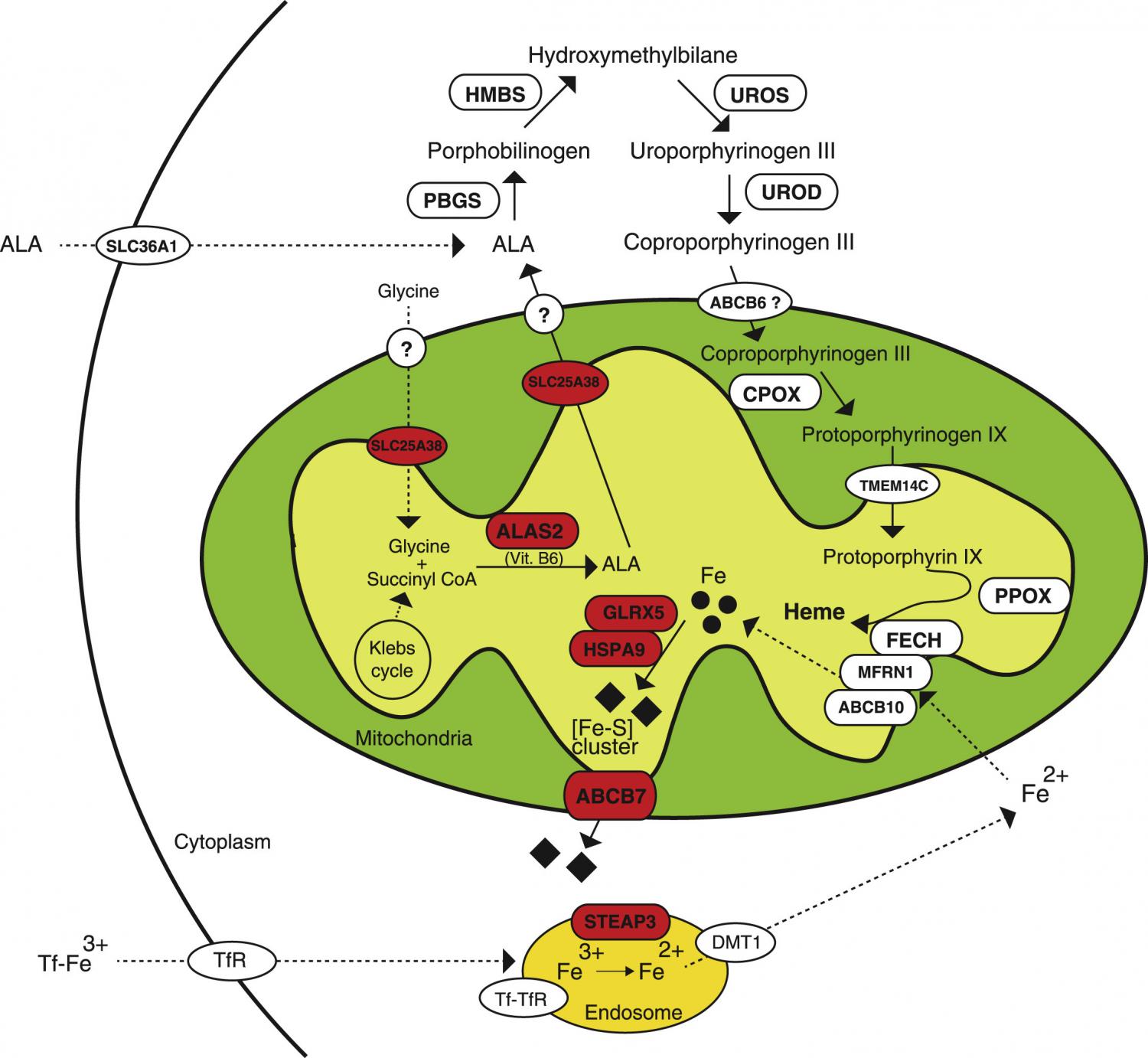
Sideroblastic anemia is a heterogeneous congenital and acquired disorder characterized by anemia and the presence of ring sideroblasts in the bone marrow. Congenital sideroblastic anemia (CSA) is a rare disease caused by mutations in genes involved in the heme biosynthesis, iron–sulfur [Fe–S] cluster biosynthesis, and mitochondrial protein synthesis. The most prevalent form of CSA is X-linked sideroblastic anemia, caused by mutations in the erythroid-specific δ-aminolevulinate synthase (ALAS2), which is the first enzyme of the heme biosynthesis pathway in erythroid cells. To date, a remarkable number of genetically undefined CSA cases remain, but a recent application of the next-generation sequencing technology has recognized novel causative genes for CSA. However, in most instances, the detailed molecular mechanisms of how defects of each gene result in the abnormal mitochondrial iron accumulation remain unclear. This review aims to cover the current understanding of the molecular pathophysiology of CSA.
